Are.na Annual
Chop and Screw Everything
7/6/2022
Roque Strew
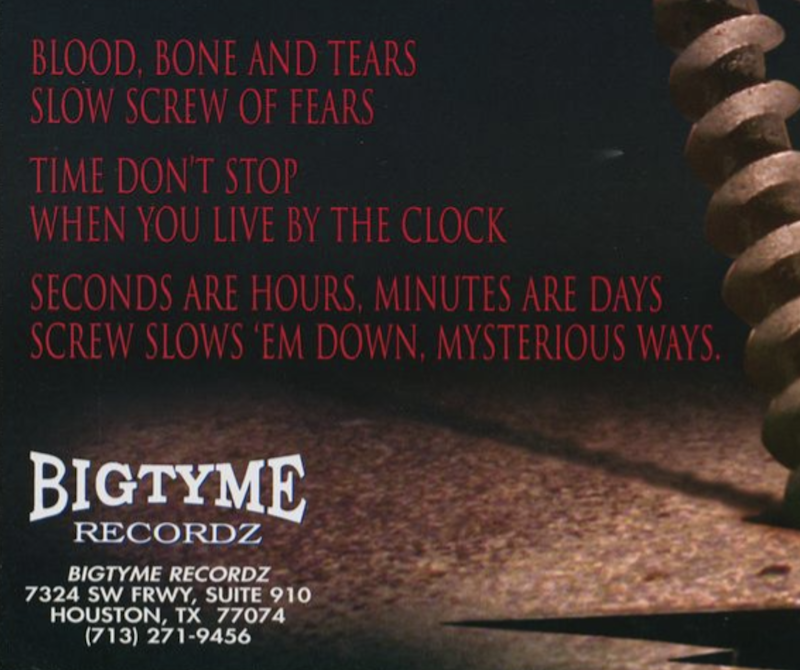
I.
I heard my first chopped and screwed track, the Swisha House rework of Bone Thugs-n-Harmony’s “Ecstasy,” my senior year of high school. The original read like a diary of a very bad trip, a tale that couldn’t get much more cautionary. Naturally, it became a beloved soundtrack for pill-popping. Truffaut wasn’t sure there was such thing as an anti-war movie; there’s surely no such thing as an anti-drug song.
You could see the form and content of the original “Ecstasy” were the same: accelerating after something. A sense that the world wasn’t revealing itself fast enough; perhaps that it wasn’t enough, full stop. The rappers captured this with a golden-age technique—the “diggity” style of early Das EFX, who pinned syllables onto words to launch into a galloping rhythm, pouring equal parts turbulence and truculence into their triple-time verses.
In sound and in feeling, the remix was a total 180. It went beyond slowing down an ambivalent ode to an upper. Less a change of pace than a shift in perception. Swisha House sanded its sharp edges, swapped its anxiety about the unknown for a melancholy about the real, and turned a spiraling nightmare into a gauzy dream.
II.
The alchemy of chopping and screwing—slowing down and rearranging songs—is uniquely Houstonian. The genre’s name honors not only its origins in the Southside studio of “The Originator,” DJ Screw, but the additions and reverberations beyond his wood-paneled walls, after the style, to use a graffiti term, went all-city. By the mid-aughts, it felt like the entire country knew that pair of verbs. (Mike Jones’ “Still Tippin” was certified platinum in 2004.) For a few years, it was almost customary for rappers to release two flavors of their albums: traditional and chopped and screwed.
The sound rose out of Houston’s simmering north-south rivalries in the early ’90s, mainly from the studios of Swisha House and DJ Screw. Born Robert Earl Davis, Jr., Screw came with his father, a long-haul trucker, to Houston from Smithville—a village in the Hill Country where Terence Malick shot the “Tree of Life,” to give a sense of its aura of trapped-in-amber Americana. Traveling between hardscrabble city and idyllic country lent him the outsider’s perspective needed to reimagine rap’s tempo, its possibilities. Screw learned local DJ Darryl Scott’s methods and dragged them to their extreme conclusion, forging a genre. What he perfected was his own woozy way of molding sounds, making them new, by stretching, fracturing, stuttering, and layering freestyles over it all.
DJ Screw created music neither for the dance floor nor the stage. He stopped time and rerouted the senses. His ideal listener was stationary. When he deejayed Thursdays at the club, he crafted a soundtrack for the shadows, the benches, the pool table; patrons could dance the other six days of the week. Faster beats, in his kinesthetic terms, didn’t work for head-bopping. Despite the style’s links with “lean,” the saccharine purple cocktail based on codeine-promethazine cough syrup, drugs were never the point, either. It was more about the sipping. Like the heavy air, the traffic, the Southern serenity, spacing out the doses was one more facet of the city’s unhurried, viscous pace. “The Screw sound is when I mix tapes with songs that people can relax to,” he told Rap Pages in 1995. “Slower tempos, to feel the music and so you can hear what the rapper is saying.”
III.
Attention needs stillness, but sometimes that’s not enough. Favorite songs must be paused, repeated, rewound. Literary classics must be re-read. The intricacy of art demands an equal intensity of perception, and a hostility to the flow of time. “Good poems can’t be simply read,” the poet Stephen Yenser said, “they must be re-read to be read, their movement must be stopped to be appreciated.” If painting and photography belong to the arts of space, he explained, poetry belongs to the arts of time. Yenser was introducing the editor and poet Jana Prikryl, at UCLA in 2019, before she read from her collection No Matter. The poems paradoxically urge us forward and “demand we give pause to gather our wits,” in Yenser’s words, “to savor but also to construe.” These actions struck me as uncanny emotional synonyms for Screw’s “feel the music and hear the words.” To truly sense and understand, everyone seems to agree, you have to double back, and get a little out of sync with the world.
Getting lost is the poet’s secret. Abandoning the mapped path, seeing the city through an outsider's eyes, makes it easier to unearth the strange in the familiar. Noticing and annotating is the only way to thoroughly inhabit your home. Otherwise you miss the umber of the Brooklyn Bridge, its exact hue moving Jana Prikyrl to celebrate that her town “gives you time, almost, to make / observations such as this, it draws them out / like the East River pretending / to be a river when it’s merely an appetite.” At certain speeds, no city is inexhaustible; there’s a fractal limitlessness to every corner. Elsewhere Prikryl wrote that “the reserved not only sidestep facts but deal in forms / the shy find beneath them, scattered / about underfoot, common.” Her lines call to mind two famous downward gazes. “If you want me again,” Walt Whitman advised in the 52nd section of Leaves of Grass, “look for me under your boot-soles.” Stéphane Mallarmé located his friend in his 1897 tomb poem, “Verlaine? Il est caché parmi l'herbe, Verlaine.” He was also hidden in the grass. These images of earthbound and subterranean poets, reconciled to their city and restored to the rhythms of nature, invite you to widen your field of vision.
IV.
Zooming out uncovers the traces of one art in another, hinting at its possibilities. The freedom of music, for Paul Verlaine, showed what poetry should strive for. He began his 1882 poem “Art poétique” declaring “De la musique avant toute chose”—music before everything. As a motto, it anticipated later links between jazz and action painting, the American souring on art as a mirror of nature. Verse shouldn’t be shallowly musical in language, Verlaine seemed to demand, but should dive to a lower depth: becoming abstract, allusive, magically suggestive. Both manifesto and experiment, “Art poétique” plotted a jailbreak from the rigid symmetries of the French alexandrine. The palette of poetic expression was at stake. Metrical issues, in Mallarmé’s eyes, were moral ones, for “every soul is a braid of rhythms.”
In this struggle to break literary manacles, the critic Umberto Eco saw not merely an unshackling, but a new balance of power that tilted toward the audience. He named Verlaine’s “Art poétique” a rhetorical manual for the opera aperta, the open work that encourages a broad freedom of response. Broad, but not infinite, for artists like Stockhausen and Joyce carefully shape their work to indulge clashing takes. The open work’s unfinished feel and embrace of suggestion invited the reader to complete the art as an active participant in meaning-making. By transforming a text, sliding around its mosaic of references, Eco proposed that you could transform the world, that a work’s potential reflected our own political potential.
V.
Around six decades have passed since the great French philosopher-activist Henri Lefebvre elaborated his concept of the everyday. In his work, the riddle of daily life was beginning to expand from ploughs and fields, to interiors and fashion. Today’s quotidian is still exhaustingly visual, so I take special pleasure in the accidents and the little tropes that grow into traditions. Found objects, taken together, might sing collectively in art-historical choirs. Drywall piled into chevrons like flatbed Kenneth Nolands; stacks of newspaper melted into Jim Lambie’s technicolor streams. Each zigzagging accumulation can transfigure the ordinary.
The hunt for these visual rhythms fuels my Are.na channel Chop and Screw Everything. They’re hidden throughout our shared reality, in the sea of images that engulfs our everyday life. Form becomes a throughline between mediums, cultures, industries, winding from analog past to digital present. Mundane motion becomes the same segmented blur in the time-lapse that unites “Marcel Duchamp Descending a Staircase” (1952) and Étienne Jules-Marey’s “Chronophotograph of a Man Clearing a Hurdle” (1892). Doubled letterforms on the frontispiece of Marcel Broodthaers’ Minuit poetry book and William Shepard’s album cover for Shostakovich’s Symphony No. 1 in F Major play the same game with legibility. Spotting these was a way of digitally peeking under boot-soles, at the grass, the leaves scattered underfoot.
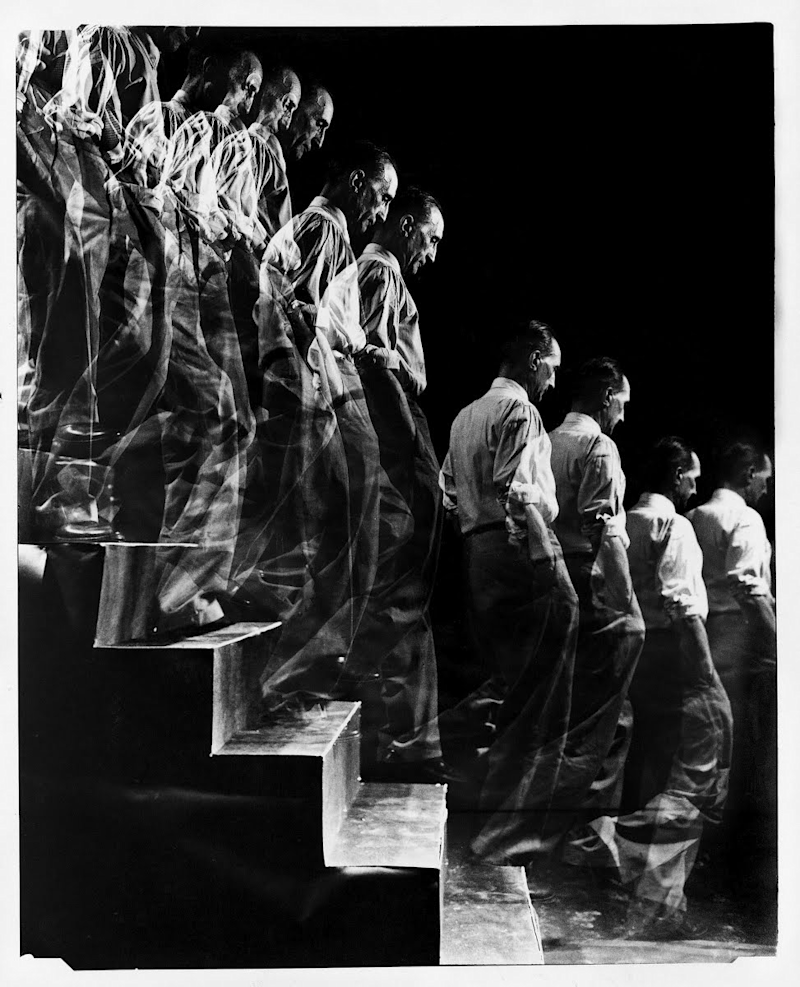

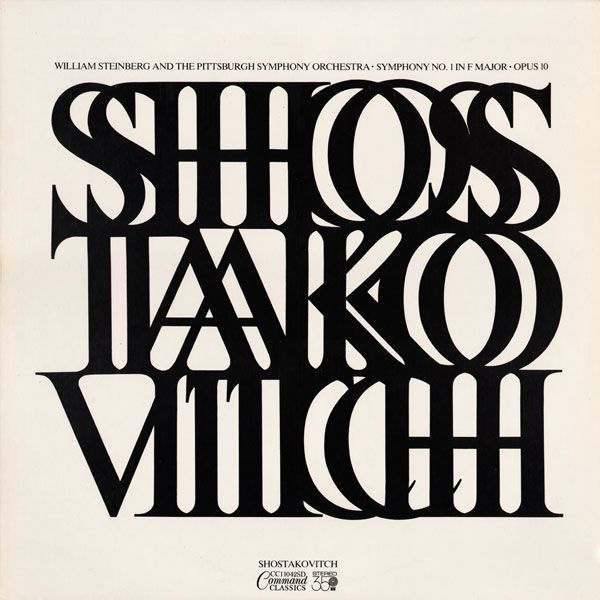
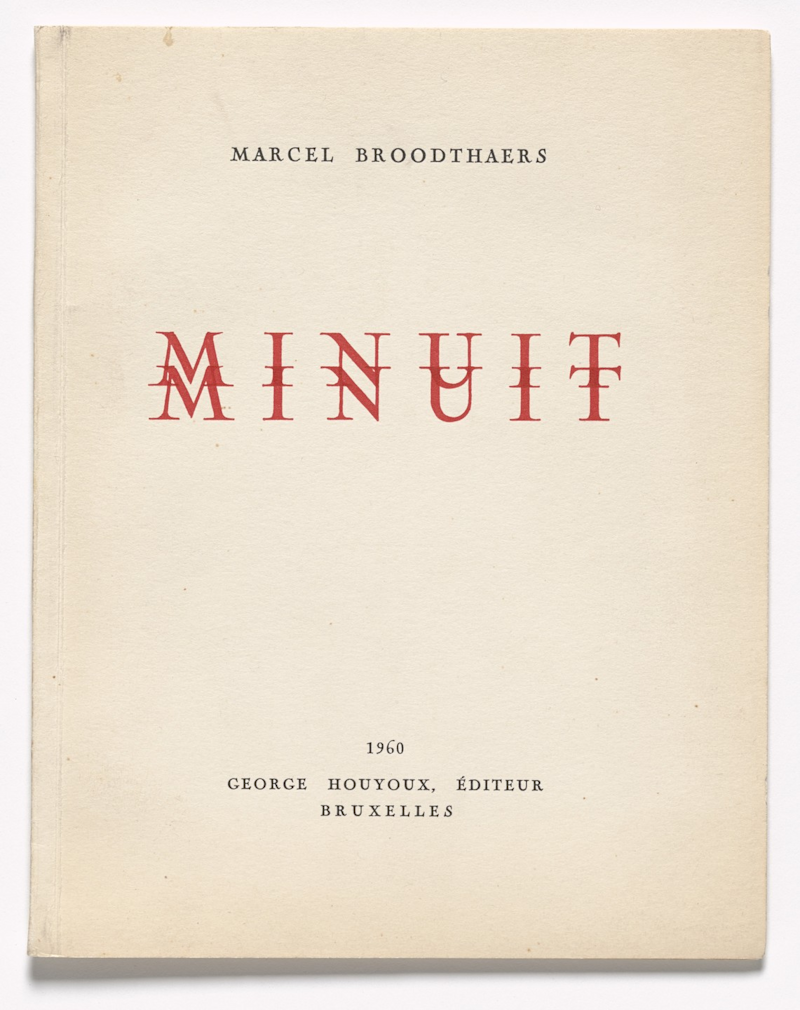
Rhythm ties together many of the channel’s unions of technology, body, and language. It makes sense that rhythm—where time, space, and energy converge—claimed center stage in Lefebvre’s final book. He came to understand the everyday as the meeting of rhythms at natural and social scales—the heartbeat and breath, on one hand, and grand structures of state and capital, consumption and production, on the other. Lefebvre felt that most were overlooking these vital processes; by contrast, the one paying them attention can intuit the rhythms even in a deceptive stillness, and when he “considers a stone, a wall, a trunk, he understands their slowness, their interminable rhythm.”
VI.
The pandemic shattered notions of cadence and boundary. During the lockdown, the lines between office and home, work and life, went hazy. Time’s arrow became a joke, a naive assumption, as an eternal present replaced the linear path from past to future. A new end-times vocabulary was needed; it wasn’t extraordinary to speak, like science-fiction characters, of “time blindness” and temporal disintegration. This disorientation afflicted the brain. The virus robbed us of the wayposts that help us mentally grasp the rhythms of not only our days and weeks, but our entire lives as social beings, marked by vacations, weddings, anniversaries of those who passed.
2020 marked the twentieth year since DJ Screw’s death, a milestone for the entire city of Houston. In February of that year, a month before the coronavirus reached into our clocks and calendars, a curator at the Contemporary Arts Museum Houston (CAMH), Patricia Restrepo, approached me about designing swag for Slowed and Throwed, an exhibition split in two: half archival love letter to DJ Screw, half exploration of his music’s analogues in photography and other visual mediums.
I was excited by the exhibition’s affinity with Chop and Screw Everything, and proposed designing a shirt that was an open work in itself, a wearable Are.na channel that sampled forms from Screw’s career and art history. Smeared on the front was one of the genre’s central images—a skull pierced by screws. I chose and distorted it as a double homage to Houston designers Pen & Pixel and Hans Holbein’s painting “The Ambassadors,” which perfectly combined a memento mori and anamorphic stretching. As I delved again and again into Holbein’s symbol-crammed portrait, I saw that it was steeped in both time (I counted three species of sundial) and death (all the instruments pointed to April 11, 1533, Good Friday, the funereal nucleus of the Christian calendar).
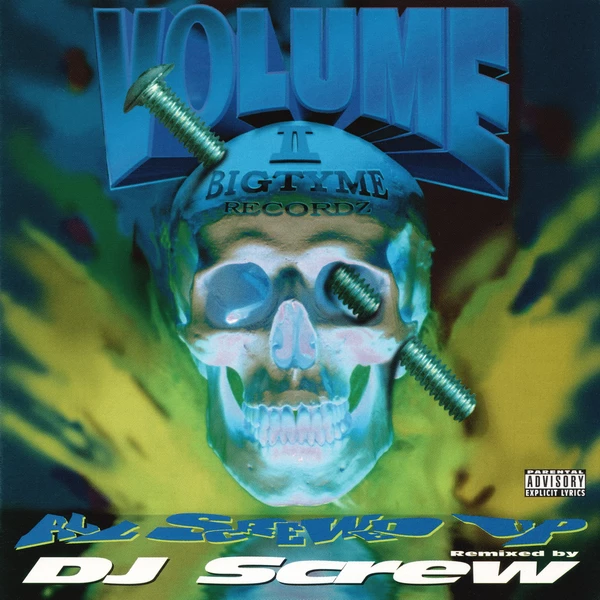
VII.
Fixations on the mortal and temporal span DJ Screw’s discography. His greatest album marked a time of day: 1995’s 3 ’N the Mornin.’ His most famous recording was simply a date, “June 27,” named for his friend DeMo’s birthday. His tapes followed suit, counting the minutes of his signature medium, the Maxell XL II gray tape (Chapter 156: 100 Minutes Of Realness), and surrendering to its limits (Chapter 146: Only Time Will Tell, Chapter 063: Mourn U Till I Join You). Over and over, he also alluded to the workday schedule, the 9 to 5.

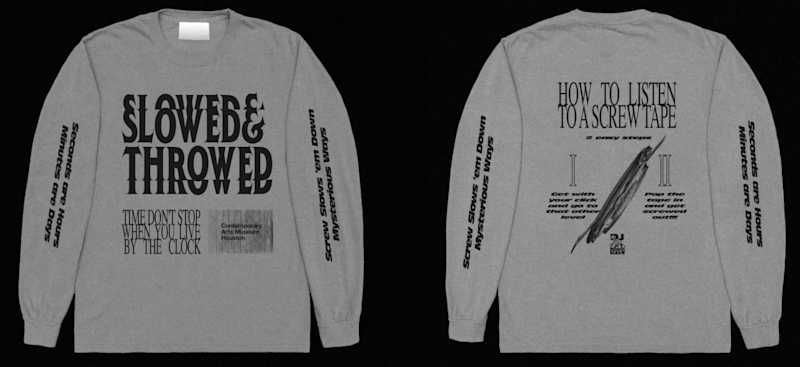
“Time don’t stop when you live by the clock” was a line I drew from the album poster and placed prominently on the CAMH shirt. I relished the implication: that if you chose another way, if you rejected the clock, time would flow again. “The clock, not the steam-engine, is the key-machine of the modern industrial age,” wrote Lewis Mumford in Technics and Civilization. The clock “is a piece of power-machinery whose ‘product’ is seconds and minutes.”
Another line on the 3 ’N the Mornin’ poster imagined this product breaking down: “Seconds are hours, minutes are days.” It earned its place on the shirt’s sleeve because it captured Screw’s elastic concept of time, but also because from the vantage of 2020, it eerily mirrored the effects of quarantine. Where did commerce fit in? I keep thinking of the parallel, shadow economy that sprang up around Screw: how his relentless work ethic served his friends and neighborhood, presented itself from car trunks and screen doors, kept him up at vampire hours, and flourished outside the major-label machinery.
He rejected a system that turned time into money, instead of togetherness and contentment. The process reaches back to the 17th century. In the classic study, “Time, Work-Discipline, and Industrial Capitalism,” Marxist historian E.P. Thompson chronicled an “inward notation of time,” as it was uncoupled from the cycles of nature and converted into a commodity. Where the rain patterns, tides, and hours of sunlight once governed the village’s and family’s labor on the land, the factories turned to the clock, the tolling bell, and fines to regulate the wage laborer’s day, erecting a new wall between something called “work” and “life.” Workers were synchronized at a great cost to the species: the arcadian dream of bodies healthily aligned to the planet’s rhythms.
VIII.
When the virus knocked everything out of sync, the world sank into a state of mourning. The reality of life and death flew into sharp focus and compelled every type of stock-taking, but foremost how—and with whom—we spend our waking hours. Clearly there was much to learn about allotting and even experiencing time, at every scale, from the year to the instant.
Neuroscientists in Houston have studied how frightened people sense time’s passage by observing them at AstroWorld and a Dallas free-fall ride. They found that the brain in crisis erupts into a recording frenzy, and fakes the illusion of time’s dilation by squeezing more data into higher-res, densely packed memories. Some speculate that this trick of recollection is behind near-death perceptions of slow motion. A special way of being afraid.
The stresses of lockdown allowed a glimpse of what dying looked like: an elongation of the moment. “If you’ve ever wondered what dying might sound like,” Jon Caramanica wrote in SPIN, “screw music is a good guess.” People hearing a screw tape for the first time often liken it to witnessing a ghostly malfunction, when drawls and beats deepen and warble as the player chews up the magnetic ribbons. Chopping and screwing, we’re reminded, merges creation and destruction. Devout attention to the world, sampling and splicing its parts, foraging for transcendence in its everyday rhythms, is an act of recovery.
This essay is from the Are.na Annual 2022, themed "portal."
Roque Strew lives in Houston with his wife, two sons, and dog, Scout. His recent design work includes exhibition materials and identities for Contemporary Arts Museum Houston, Houston Center for Contemporary Craft, Galveston Arts Center, and the Center for Craft. In the past, he has written about new music for Vice, Pitchfork, and the Village Voice.
Are.na Blog
Learn about how people use Are.na to do work and pursue personal projects through case studies, interviews, and highlights.
See MoreYou can also get our blog posts via email